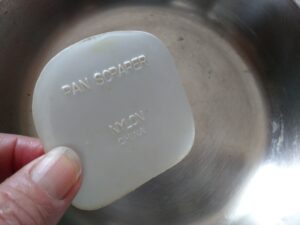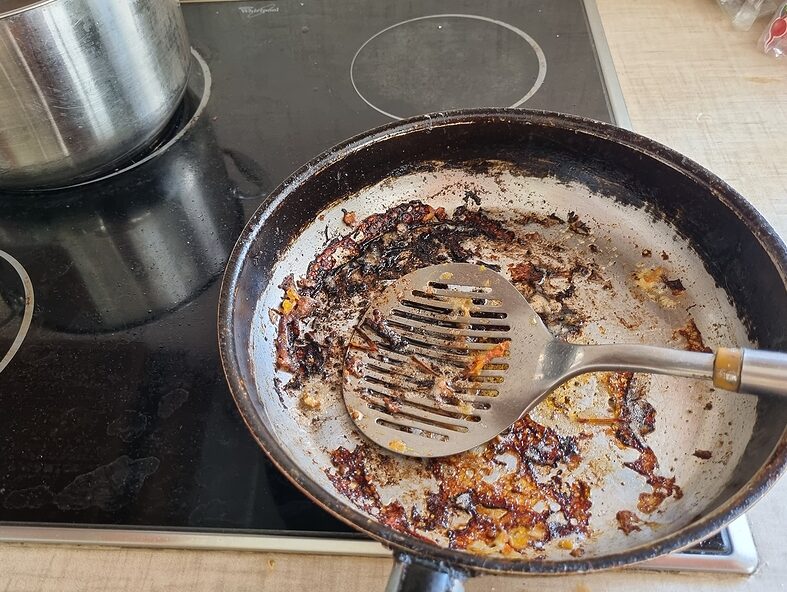One of our readers contacted me about a pressing issue: Stuck-on eggs!
Every morning after cooking breakfast, he would be left with egg stuck all over the bottom of his frying pan. Of course he could just get a non-stick pan, but given all the recent concern about PFAS, I couldn’t advise that. But there are two strategies for happy cleaning, without non-stick pans: Prevention + De-Glazing.
Prevention
While I gave our reader a general idea for how to prevent sticky pans, I recently came across an article that explains the science involved. It’s all about employing the “Leidenfrost effect” to give your pans “non-stick superpowers.”
Rule #1: Pre-heat Never put food into a cold stainless steel pan. Always pre-heat your cookware before putting anything in it, even oil. This has to do with 1) the way proteins can, surprisingly, bond with some of the elements in the metal, and 2) the fact that, again surprisingly, stainless steel actually has a porous surface which only becomes smooth and non-sticky when properly heated.
Rule #2: Test the Heat To see if your pan is properly heated, toss a drop of water into it. It is properly heated if the water droplet rolls around like an air hockey puck. That’s the Leidenfrost effect at work.
Rule #3: Add Room Temperature Food Once your pan is hot enough, pour out the water droplet, add your cooking oil, and then your ingredients. BUT, make sure you don’t add ingredients straight from the fridge, or worse, the freezer. That will drop the pan’s temperature and undo all your careful pan heating preparation.
Rule #4: Patience Don’t be in a hurry to flip and stir your food. Wait until you can do so easily because it takes time for the proteins to bind to each other and create an easy-to-flip surface.
This is a quick overview just to impart the basics, but do read the whole article if you’d like a better understanding of the science at work. It’s a fun read! (1)
De-Glazing
Despite your best Leidenfrost efforts, you may still end up with some stuck-on foods after cooking. Not to worry. Simply “de-glaze” your pan.
“De-Glazing” is a cooking technique used to scrape up the flavorful bits left behind when sautéing foods. You’ve probably seen recipes directing the cook to pour a little water, broth or wine into the saute pan and scrape the bottom with a spatula. Not only does this incorporate those flavorful bits and pieces into your dish. It also cleans the pan!
You can use the same “technique” after cooking. Add water–but only a little to avoid warping the pan–and scrape the pan bottom with a spatula. Most, if not all of the residue, will lift off, leaving you with an easy clean up.
I use this plastic scraper to get into the curved pan corners.

You can also deglaze as a final cooking step, even if a recipe doesn’t call for it. For instance, when cooking my egg scrambles, I add a tablespoon or two of water to the pan at the very end and everything scrapes up into the scramble so I don’t waste any food.
BTW, it also helps to keep a close eye on the stovetop so foods don’t have a chance to burn to the bottom of the pan! : )
Oh and yes, don’t leave a sticky pan sitting on the stove for hours where it will get tougher and tougher to clean. At least fill with water and let it soak.
(1) https://www.popsci.com/diy/make-stainless-steel-non-stick/
